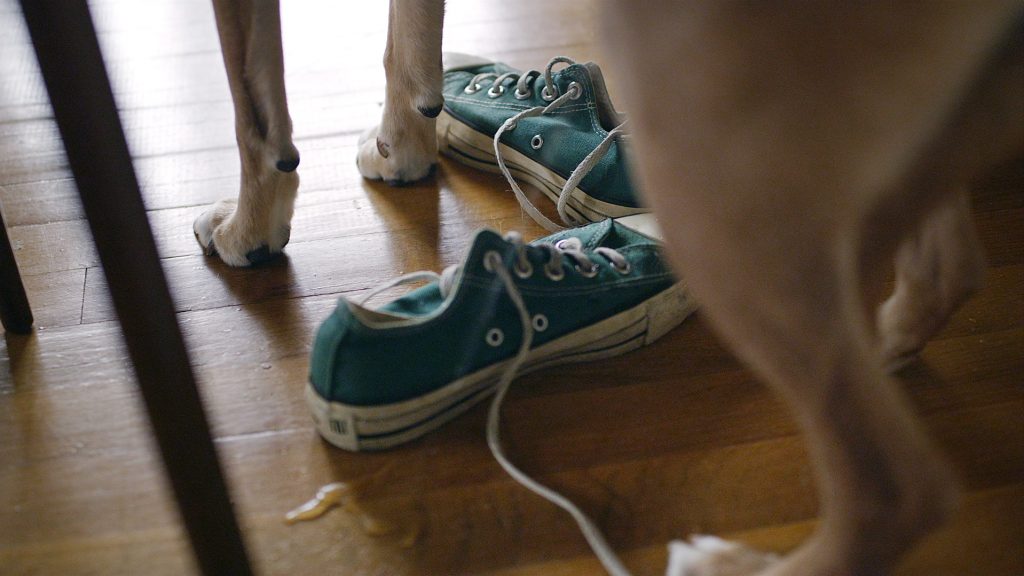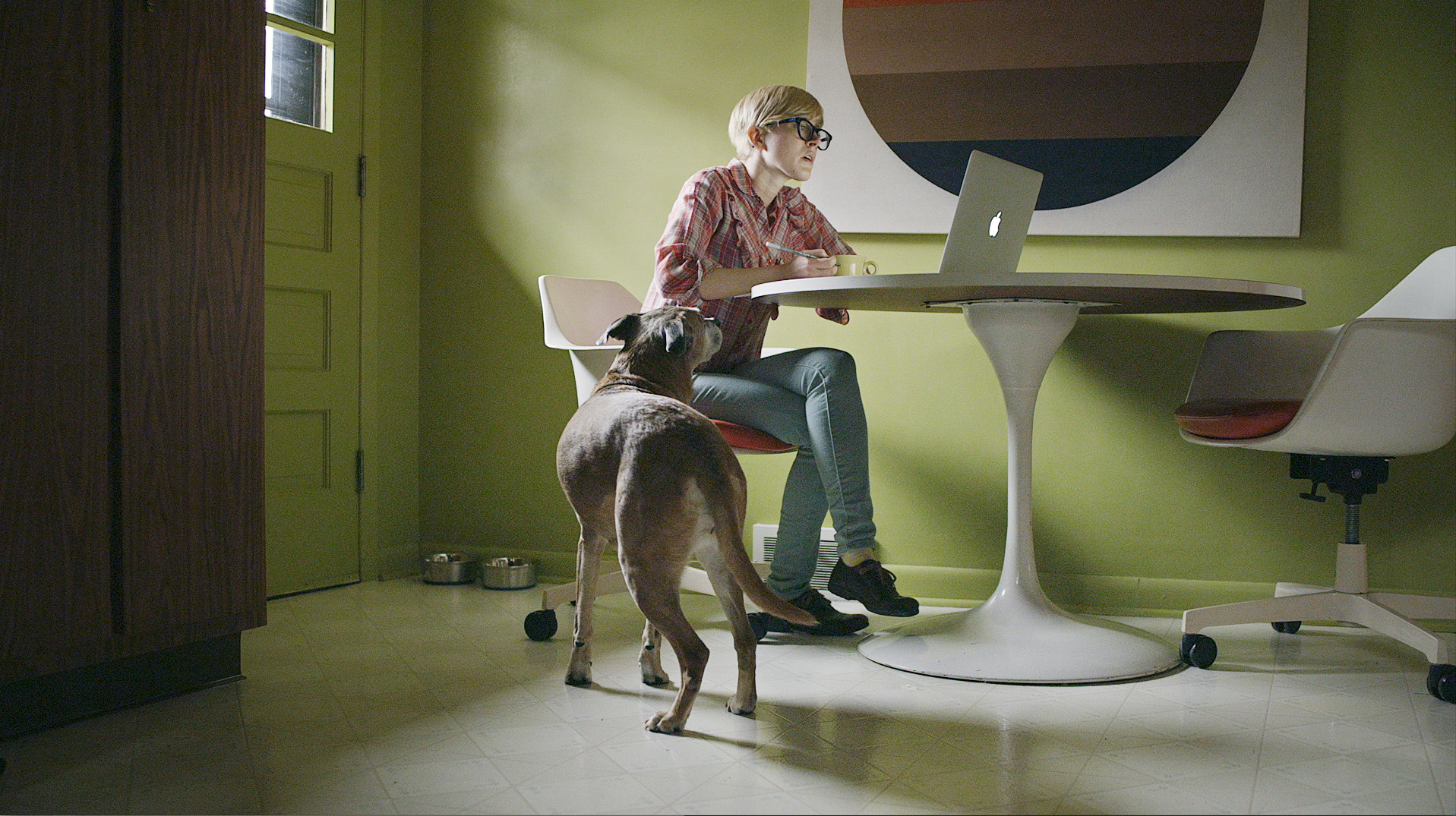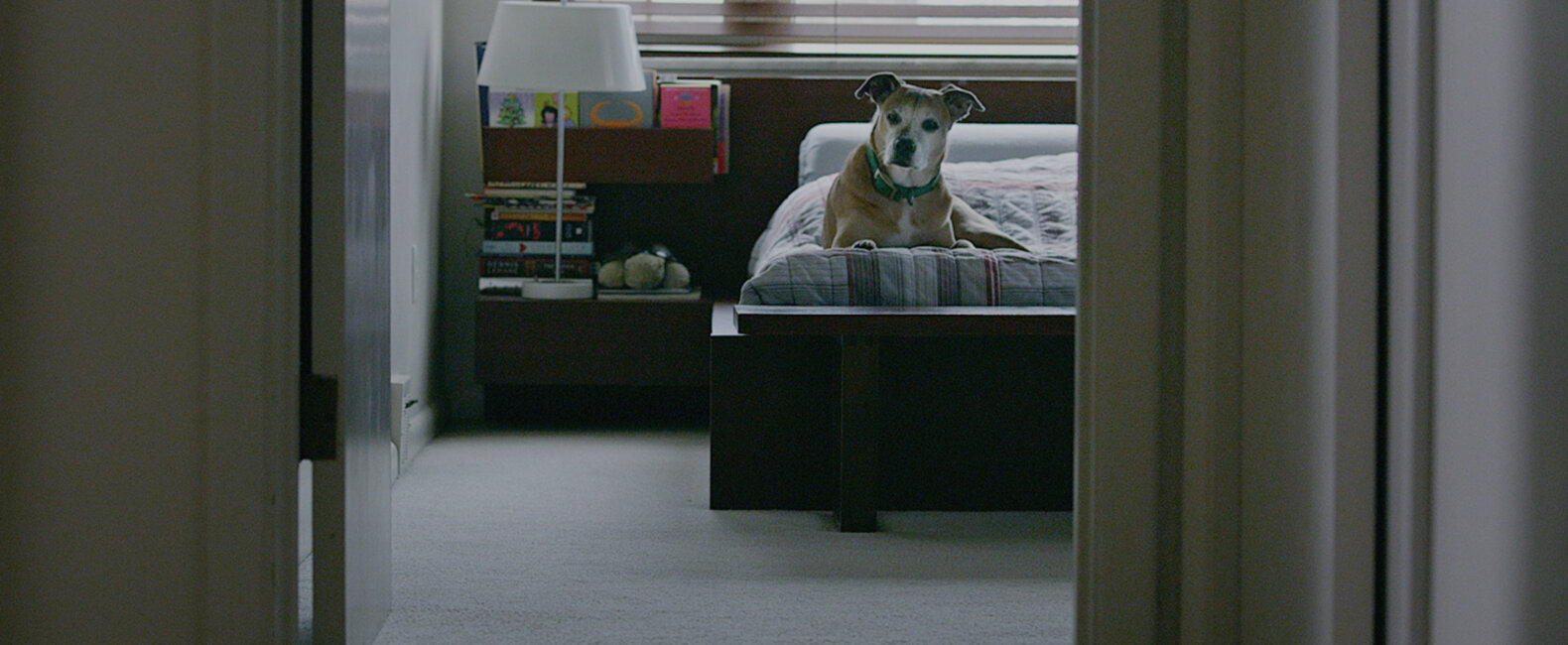It was tempting to open this interview with some sort of dog cliché about learning new tricks or letting them out or barking up the wrong tree. But the truth is, any cliché used in relation to Animal Studio’s web-series-turned-TV-show, Downward Dog, would be tone deaf. The show is the opposite of a cliché. It’s a fresh, dark, genuinely funny spin on what could easily have been a farce: a talking dog named Martin. “I got Samm [Hodges] involved, which is ironic because he thought it was the worst idea in the world,” writer/creator/director Michael Killen told us. “We landed on this very self-involved, Millennial-toned dog who’s looking back on his life and trying to decide whether or not he mattered. That gave it this dead serious tone, which is actually what makes it so funny.”
We talked to Michael about the inspiration for the series, the art of getting dogs to talk, and their lottery-like success at selling the series to ABC.
You have a history of making dogs talk.
It’s true. When I was living in L.A. after I graduated from the American Film Institute, I happened to work on a couple of jobs that involved making animals talk. This was around the time Babe came out. [Rhythm & Hues] had developed the technology that won them an Oscar, but they weren’t set up to meet the turnaround time of commercial work. So I did some of their work for them at an L.A. post house. Long story short, Taco Bell came to them with the idea of a talking Chihuahua, and I ended up animating the Chihuahua. A few years later, Kathy Dziubek, Jim Kreitzburg, and I started our own company, Animal Media Group.
So, how did the Downward Dog web series come about?
Over the years I’d watched these younger guys at the company throw themselves into various passion projects. A few of them really took off. I started thinking, Hey, I have 17 years of experience making animals talk, and I should do something with that. So I ended up coming up with the idea for a short called Downward Dog, which eventually became seven shorts. We produced them in between commercial projects. I’d have these great crews, and I’d ask them if they were interested in working an extra day. Over time, that’s how we built the web series.
Did it take a long time to find the series’ voice and pace? What was it like getting that first episode written?
I tried a couple of different approaches. At first, I wrote the piece myself. I didn’t like how it came out, so I brought on another writer. That didn’t work out either. Then I tried a version that was more Woody Allen comedy-ish in tone. Then I got Samm [Hodges] involved, which is ironic because he thought it was the worst idea in the world. And maybe because he had that attitude, it all came together. We landed on this very self-involved, Millennial-toned dog who’s looking back on his life and trying to decide whether or not he mattered. That gave it this dead serious tone, which is actually what makes it so funny.
What dog did you use for the web series?
It was my brother-in-law’s dog, Sadie, who was completely untrained but incredibly food motivated. She was remarkable. In fact, when we were done with that first day of shooting, we were driving away from the set and I knew we had something special. It was the way Sadie was carrying on with the camera. It felt different than any of the other animal work I’d been involved with. And in the end it truly was. We got lucky. The shorts got noticed by Jimmy Miller, this super-big comedy manager who’s worked with Will Ferrell and Jim Carrey. He was in town doing a show for HBO, so I showed him one or two of the episodes. He fell in love with it. He took Samm and me to pitch it, and we wound up with Legendary, who took it to 12 different networks until we finally ended up at ABC.
Tell us about the pitch process. What did you do to prepare? What made it work?
Well, the big thing Jimmy had us do was write the pilot. He said if we wanted to stay attached to the project, we needed to make it our own or we’d be pushed to the side. So, Samm and I wrote it, I directed it, and that really set things up for us. Because television is like the advertising industry: if you haven’t shot a TV show, they don’t want you to shoot the series.
Really though, it was the web series that won it for us. That was our magic bullet. In fact, when Jimmy set up the meetings, he’d send a link to the web series and say, “Are you interested in meeting these guys?” I think he was 12 for 12 in getting them to watch the web series. Having the pilot script, the series structure, and all the characters worked out definitely helped us; but the videos were probably the only reason we got the deal with ABC. If I had previously created five television series and then walked in and pitched our idea, they’d be more likely to say, “Oh yeah, we believe you.” But there was absolutely no reason for them to believe us — except for the fact that we’d put Downward Dog on film. They got to see how we were going to handle the talking dog tonally.

Did you have any experience writing sitcoms or television before this?
Oh, hell no. No, no, no. Nor did Samm. Basically, I spent 10 or 15 years getting to work before everyone else and writing things nobody ever saw. So when Samm and I wrote the pilot, we read and studied everything we could get our hands on about TV writing. Jimmy Miller and Sam Hanson gave us notes and provided guidance on how to structure our pilot. Then once ABC picked it up, we were working with other producers and writers who would give us notes. We got a lot of notes.
Was there much difference between structuring the web series and structuring the television show?
In the web series, things were focused on Martin’s world, just the dog’s POV. It was almost Charlie Brown-like in the way we avoided the human world. We stayed below table level for much of the web series. But we knew that wouldn’t sustain a 30-minute show. We had to develop the human world and better develop Martin’s connection to and love for his owner, Nan. That was harder than we expected.
How so?
We went back and forth on how much of the human world we should show. At first we were like, “Okay, the human world is something that’s shown only when Martin is a part of it, like 20 feet away from him or less.” But eventually, as we developed the series within the pilot, we decided it should be anything in the human world that impacts Martin’s world. That allowed us to expand Nan’s role, let the audience see the people she interacts with. I’d always envisioned Martin’s owner having to deal with a breakup or a relationship, and how that would affect — or not affect — Martin’s world. Which could be funny because he’s so selfish and self-focused.
It seems that with a project like this, getting the tone right is a big deal.
Definitely. We policed the tone so much. Because if it got too goofy, then the talking dog premise would be ridiculous and not funny. Most people would probably expect a talking dog show to be goofy. And that’s why it was important to us not to be that. I don’t know if it comes across, but I always thought of our series as a talking-dog show in the manner of The Sopranos. My original thought was: Could this actually be on HBO?

What did you learn during the process of selling the series? If you were to do it again, would you do anything differently?
I don’t know if what happened for us could ever be duplicated. First off, just getting to shoot a pilot was a big deal. Somebody told us that the year we were picked up, those comedy executives probably saw upwards of 500 pitches. They green-lit 13. They picked up three.
I can’t tell you how many times Samm and I were told, “You know you’re in rare air, right? You’re nobody from this end of the business, and you sold from pilot to Season One.” We were up against people who’ve had really big shows and they had really big stars attached. So there’s a good chance this is it. This will be the only one we get. That doesn’t mean we won’t work. I’m getting offers to shoot on other shows right now. I’m sure Samm will be offered work on other shows too. But the truth is, we snuck in through the golden doors.
I guess the big takeaway is if you have a big idea, go make it.
Absolutely. If you have an idea, you should go for it. I know that’s easy for me to say. I have a full production facility. I have everything I need to put this stuff together, so I can do it more easily than most people. But I’ve watched my 17-year-old son work on school projects. He shot a little thing on his iPhone, edited it on his iPhone, and it’s pretty damn good!
I’m in my 50s now. I grew up in a generation that was raised to believe it was a privilege to get a camera and some film and get it developed. It was incredibly ballsy to go do your own project. And you needed money. That’s why I was more reticent to do something for myself. But then I saw that my own staff, who were in their 20s, had way less fear about grabbing a camera and going out to shoot something. I said to myself: Well, shit, why am I not doing that? That was my wake-up call.
Last question, because you’re an expert: Why do we like watching animals talk? Ever since Mr. Ed it seems like we never grow tired of it.
Actually, we did some research on Mr. Ed. I looked up how they made his mouth move. Apparently, at first, it was by putting a piece of string in his mouth, but eventually the horse learned how to move his lips on cue. Doing that today would probably get you arrested. But back to your question, the answer is simple: The great majority of our population lives with these creatures — dogs and cats — and we imagine what they may or may not be feeling. We’d love to hear their point of view. I also think part of the appeal is getting to see things from a different perspective. It’s why movies like Toy Story are so successful. It’s a new way of looking at your environment — you get to experience the world from an angle you haven’t heard from yet.

















































































